Al-Moez Ladin Allah Al-Fatimi Street
It is located in Al Azhar district -
Downtown - Cairo. Al-Moez Ladin Allah Al-Fatimi built it in 969 AD, This street
is not only considered a great archaeological and tourist attraction, but also
it is a market, which attracts hundreds of thousands daily. In addition, the
Archaeologists describe it as the largest open museum of Islamic monuments in
the world, because it has preserved all the archaeological buildings so far.
Al-Moez Ladin Allah Al-Fatimi Street on Google Maps
More
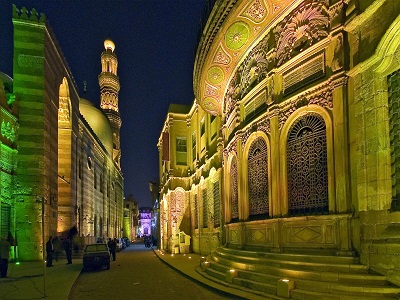
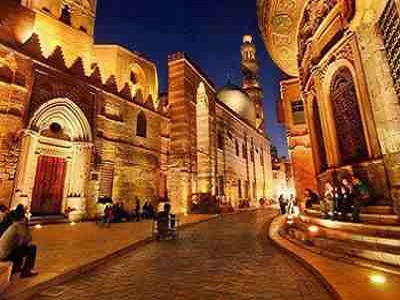
Babal-Futuh
The gates of Cairo mark the beginning of stone masonry in
Cairo, and were built in the Fatimid era in Byzantine architecture style. Bab
Al-Futuh is a short walk to the west of Bab Al-Nasr and close to Al-Hakim
Mosque. The Gate of Conquest or Bab Al-Futuh is the northernmost of the three
remaining old gates of Cairo. It once served as the northern entrance to the
city. Like those of Bab Zuweila, the towers of Bab Al-Futuh are round and
beautifully decorated.
Babal-Futuh on Google Maps
More
Bab Zuweila
Bab Zuweila is located at the end of Al-Moez Ladin
Allah Street on the south side facing the Mosque of Al-Salih Talaye. The
Fatimid vizier Badr al-Jamali built it, BabZuweila is named after Zuweila
tribe, one of the Berber tribes of North Africa. Bab Zuweila is the gate where
the heads of the Apostles of Hulaku, the leader of the Tatars, were suspended.
Bab Zuweila on Google Maps
More
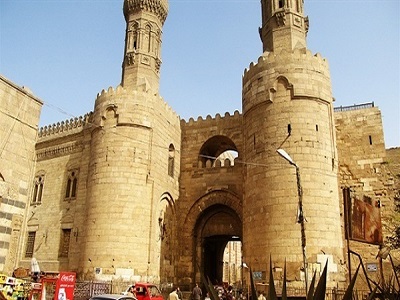
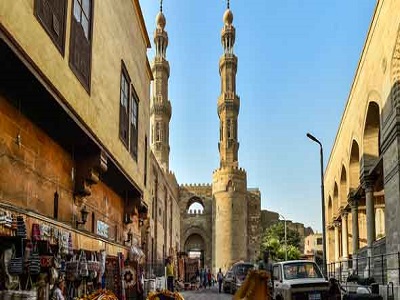
Bab Al-Nasr
It is Meaning Gate of victory; Bab Al-Nasr is one of
Cairo’s old gates. Built in 1087, it served as one of the northern gates to the
Fatimid Cairo. Unlike the cylindrical towers of Bab Zuweila and Bab Al-Futuh,
the two towers of Bab Al-Nasr are rectangular, and you can see some Byzantine
influence in their architecture. Many of the stones used to erect these gates
were taken from Pharaonic monuments and if you look closely enough you might
even spot some hieroglyphs.
Bab Al-Nasr on Google Maps
More
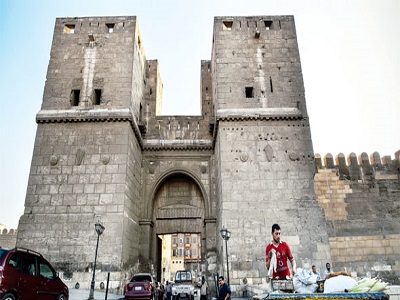
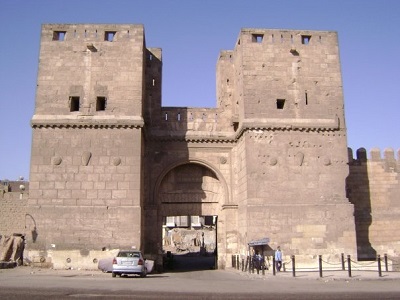
Bayt El-Suhaymi
Bayt El-Suhaymi "El-Suhaymi
House" is located in Al-Darb Al-Asfaer area of Moez Street. It is a unique
example of the private residential houses architecture during the Ottoman Era
in Egypt. It also considered being the only house representing Cairo
architecture in the Ottoman Era in Egypt.
School of Sultan Al-Ashraf Barsbay
The school is located at Al-Moez Street in the center of Cairo.
It was named after the name of its owner, Sultan Ashraf Barsbay. This school is
considered one of the greatest Mamluk schools as it reflects the most beautiful
era of Islam. Which is the age of the Mamluk Sultans.
School of
Sultan Al-Ashraf Barsbay on Google Maps
More
Al-Kamileya School
The school is located at
the southeast of Al-Moez Street. It was established by Sultan al-Kamil Mohammed, who was one of the most
important sultans of The Ayyubid period.The school is considered the second
school for teaching Hadith.
Al-Kamileya
School on Google Maps
More
The mosque of Al – Akmar is located
at Al-Nahassin Street at Al-Moez Street close to the Qalawun Complex, The
mosque is characterized by its intricate and delicate carvings decorated façade
that includes three styles of Ornate keffiyeh literature and it is one of the
oldest example of the small mosques in Egypt and one of the only remaining
Fatimid mosques in Cairo.
Mosque of Al - Akmar on Google Maps
More
Mosque of Al Hakm b amrAllah
It is Located near Bab al-Futuh, at the beginning of
Al-Mo’ez Street.
A famously eccentric caliph, Al-Hakim Bi-Amr Allah, ordered its construction in
990 AD.The sanctuary's most impressive features are its minarets, the oldest
"surviving" minarets of all Cairo, and the mosque's spectacular
entrance resembling a propylon which is more of an Ancient Egyptian
architectural feature.
Mosque of Al Hakm b amrAllah on Google Maps
More
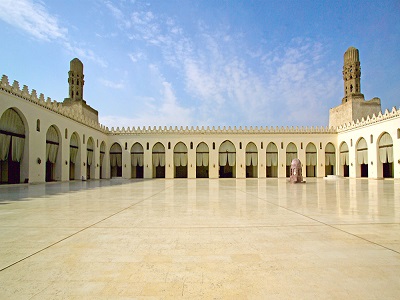
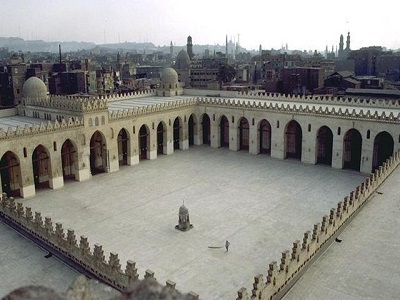
Al Moayyed Mosque
Al-Mu'ayyad Mosque is located in
al-Mo'ez Street near Bab Zewailah and it was built by Sultan Al-Mu'ayyad Abu
Al-Nasir Sheikh Al-Mahmoudi. It is built of different colors of marble, which
appear in the decoration of the walls, ceilings, and floors that reflects its
magnificence.
Al Moayyed Mosque on Google Maps
More
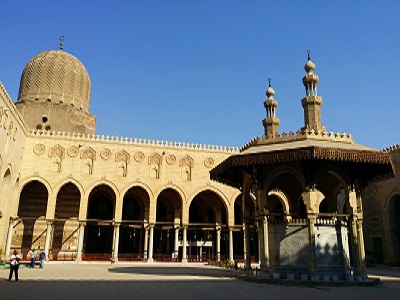
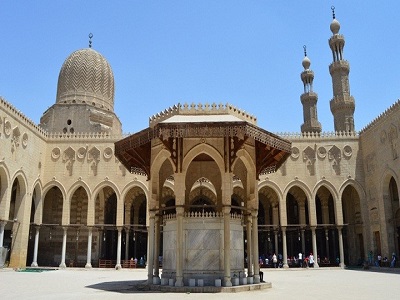
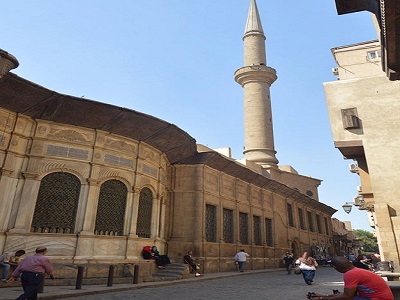
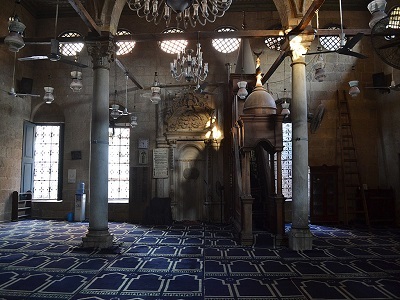
Mosque and School of Sultan Barqouq
It is located in Al Moez Street between Al Kamilyia School
and Nasser Mohammed Mosque. Al-Zaher
Abu Said Barqouq built it on the orthodontic school system Style, consisting of
an open courtyard surrounded by four iwans. It was designed and coordinated by
Eng. Ibn Al-Tulun, who decorated it with amazing engravings.
Mosque and School of Sultan Barqouq on Google Maps
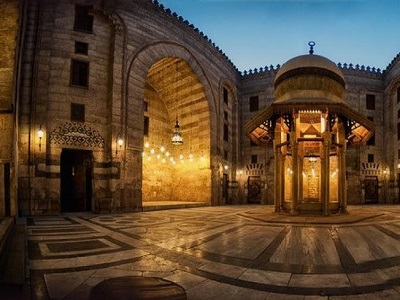
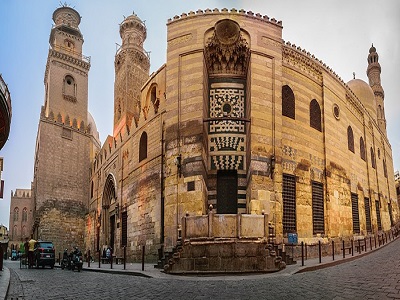
House of Mustafa Jafar Al – Selhdar
Mustafa Jaafar's house is located in Al-Darb Al-Asfar
of Al-Moez Street, next to Al-Suhaymi House.The house has two entrances, the
main one that is opened on Hara Al-Darb Al-Asfar while the other one is a
secondary entrance that is believed to have been overlooking a private Hara for
this house.
House of Mustafa Jafar Al – Selhdar on Google Maps
More
Al Ghouri Complex
It is located in Al-Imam Mohammed
Abdo Street at the corner of Al-Moez Ladin Allah Street. King Al - Ashraf Abu
Al - Nasr Qansoh Ghouri built this architectural masterpiece consist of agency,
path, house, chair, sable, kotab, school, dome, and mosque, On Saturday, Monday and Wednesday
display inside it one of the finest and most beautiful shows which is Al
Tanowra show.
Al Ghouri Complex on Google Maps
More
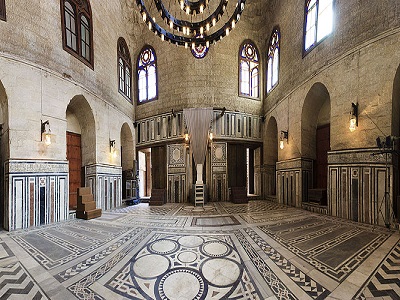
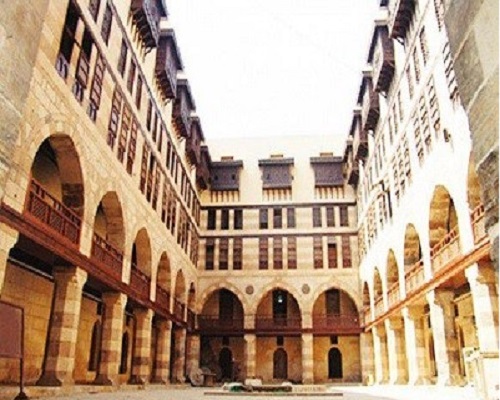
Qalawun Complex
Qalawun Complex is Located on Al-Mo’ez Street in Cairo, the
Qalawun complex was built by the Mamluk Sultan Al-Nassir in 1304 AD in honour
of his father Qalawun. The complex houses a mosque, a Madrasa, a Bimaristan
hospital in Persian and a mausoleum where Sultan Qalawun is buried. It is often
described as the world's second most beautiful mausoleum in the world, only
after the Taj Mahal, which it slightly resembles.
Qalawun Complex on Google Maps
More
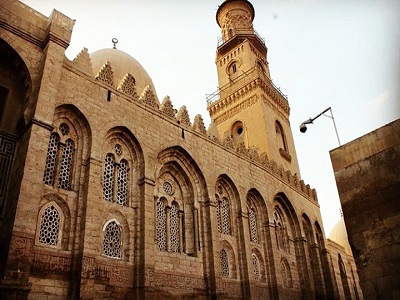
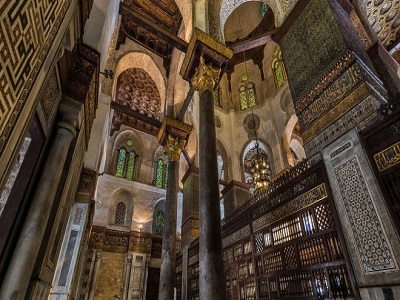
The Palace of Prince Bashtak
Beshtak Palace is one of the remaining domestic households of
the palatial period of 14th century Mamluk princes. The Qasr was built by
Prince (Amir) Beshtak Al-Nasirione of al-Nasir Muhammad's close khassakiya
amirs and his son-in-law in 1334 – 1339 where the Eastern Fatimid palace used
to stand. Beshtak Palace has uncommon windows covered with mashrabiyya screens.
However, the second floor having its sharp arches, stained-glass home windows
and gilt decorated wood paneling differentiate it as being just about the most
stunning private chamber from that time.
The Palace of Prince Bashtak on Google Maps
More
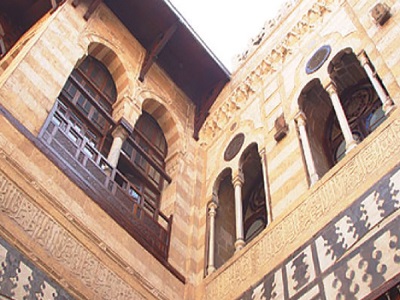
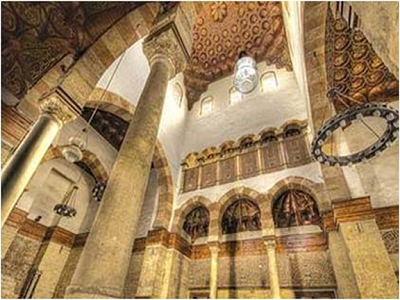
Sabil-Kuttab Abd El-Rahman Katkhuda
This stunning example of Islamic architecture is located at
Al-Mo’ez Street and will most likely be included in any tour of old Islamic
Cairo.Described as a "treasure of Ottoman architecture", this Sabil
Kuttab was built in 1744 AD – 1157 AH by Abd El-Rahman Katkhuda, a renowned
architect. Its purpose was to provide the thirsty with the blessing of water,
and children with the blessing of education.
Sabil-Kuttab Abd El-Rahman Katkhuda on Google Maps
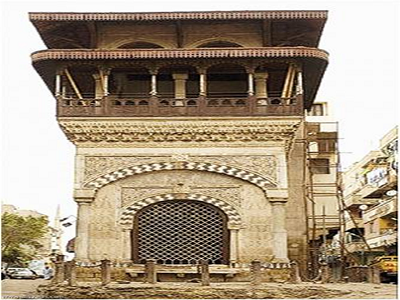
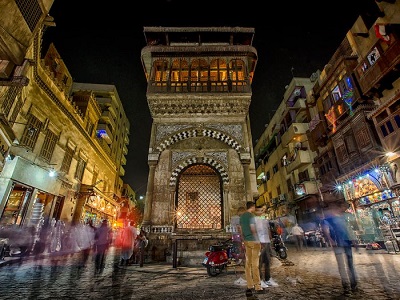
Sabil and Kuttab Khusro Pasha
Khusro Pasha Sabil is located at Al Moez Street in front of Sultan Qalawun Complex.
It is considered the oldest Ottoman Sabil in Cairo. It consists of a building
under the ground for water storage, which directly leads to another one for distributing
this water to pedestrians.
Sabiland Kuttab Khusro Pasha on Google Maps
More
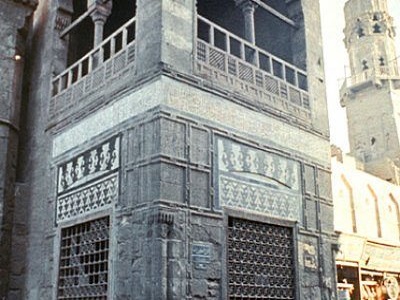
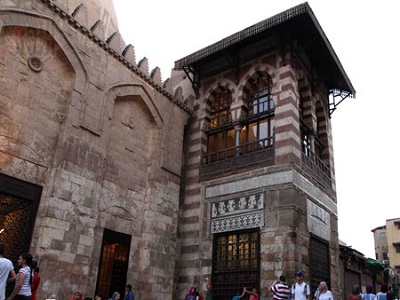
Nafisa al-Bayda Sabil
Nafisa al-Bayda sabil is located at the
southern end of El-Moez Street near the city gate.It was built by the wealthy
Lady Nafisa al-Bayda, the second wife of Murat Bek Who ruled Egypt for more
than twenty years.
Nafisa al-Bayda Sabil on Google Maps
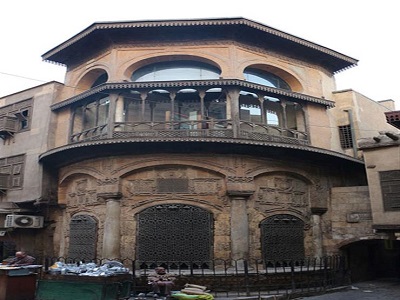
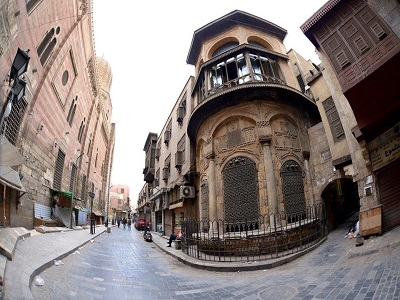
Bath of Sultan Al-Ashraf Aynal
The Bath of Sultan Al-Ashraf Aynal is located in Al-Moez
Street. It was built in 861 AH /1456 AD for Social function. Its main entrance,
leads to an italic path to prevent anybody from viewing what is inside. Also,
it has square reception room with wooden roof has 28 windows.
Bath of Sultan Al-Ashraf Aynal on Google Maps
More


